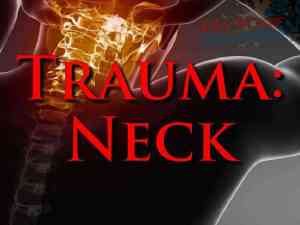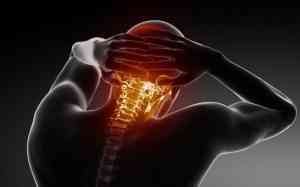
How To Treat Neck Injuries With Basic First Aid
 Neck injuries are a genuine danger bikers face while riding, whether it is on or off the beaten path. Any time you take a tumble off of your bike, your risk for suffering a neck injury increases by a significant amount. Based on that fact alone, it’s crucial that you understand how to accurately diagnose and treat the most common types of neck injuries with at least basic first aid.
Neck injuries are a genuine danger bikers face while riding, whether it is on or off the beaten path. Any time you take a tumble off of your bike, your risk for suffering a neck injury increases by a significant amount. Based on that fact alone, it’s crucial that you understand how to accurately diagnose and treat the most common types of neck injuries with at least basic first aid.
**Before you read any further, please use common sense, if your symptoms increase in severity seek medical attention immediately!**
The Most Common Types of Neck Trauma
The three most common types of neck injuries are strains, sprains, and fractures. Of these three types, neck strains and sprains are the most common due to the neck’s soft tissue taking the brunt of the damage on a majority of neck injuries.
The bones, joints, ligaments, tendons, and nerve endings in your neck all work together. What this means is that if one of these areas gets damaged, it’s very likely that another area is, or will become, injured, also. For that reason, you must always be thorough in diagnosing the specific injury.
Mild Neck Injuries – Strains
A muscle strain is a neck injury to the muscles that help move the spine. The most common location for muscle strains is in the lower back; however, they can also occur in the neck muscles.
The most common cause of muscle strains is lifting heavy objects without using proper form. For motorcycle riders, this can translate into standing the bike back up, loading it into the back of the vehicle, or re-positioning it.
Common Symptoms of Neck Strains
- Muscle spasms
- Reduced flexibility
- Mild to moderate pain
Treating Neck Strains with First Aid (or Any Other Type of Muscle Strain)
The best way to handle a neck strain (or, other muscle strain) is to modify your activity to take as much stress as possible off of the affected area. A strain will heal on its own in due time. If the pain is substantial, then over-the-counter pain pills should do the trick.
If the pain lasts longer than a week, then you need to schedule an appointment with your doctor.
Moderate Neck Injuries – Sprains
A neck sprain is a more severe form of a neck strain. It’s a neck injury to the ligaments in your neck. Neck sprains can range from mild to severe, with severe sprains needing immediate medical attention.
Common causes of neck sprains include hard falls and sudden or unnatural movements of the neck that overstretch and overload the neck joint.
Common Symptoms of Neck Sprains
- Mild to severe swelling in the affected area.
- Reduced flexibility.
- Mild to severe pain in the affected area.
Treatment For Neck Sprains
For mild to moderate neck sprains, do the following:
- Immobilize the area as much as possible.
- Immediately place ice on the affected area to reduce swelling.
- Take an anti-inflammatory to reduce swelling further.
- Get it checked by the doctor as soon as possible.
For Severe Neck Sprains!
- Completely immobilize the person and contact 911 immediately.
Severe Neck Injuries – Fractures
A neck fracture is a break in a cervical bone. The most common causes of neck fractures are falling, crashing, and other blunt force trauma. The position of the head and the angle of the force at impact greatly determine the severity of the break.
The severity of a neck fracture can range from mild to fatal. They’re the most severe type of neck injury, and should never be taken lightly.
Common Symptoms Of A Neck Fracture
- Severe pain in the affected area.
- Severe swelling of the affected area.
- Decreased feeling in arms and/or legs.
- Paralysis of arms and/or legs.
Treatment For Neck Fractures
There’s only one type of first aid treatment for a suspected neck fracture:
- Completely immobilize the person.
- Contact 911 and seek medical help immediately.
Moving the person could cause further damage to the neck and potentially lead to paralysis, so it’s essential that you keep the person completely still.
Related: Hypothermia can sneak up on you when riding in cold weather, keep an eye out for the symptoms!
How to Help Prevent Neck Trauma
The best offense for preventing neck fractures is to have an outstanding defense. Here are three things you can (and should) do immediately to reduce the risk of receiving a neck fracture:
- Wear the proper protection at all times, at the very least a helmet, and if you can, a neck brace.
- Take Vitamin D and Calcium daily. Both help increase bone density. They can be found in most daily vitamin packs.
- Strength Training. The stronger your neck muscles, the greater the beating they’ll be able to withstand. A strong, flexible neck helps prevent neck injuries. Muscle strength will greatly reduce your chance of injury to all joints on your body.
Head and neck injuries can affect the rest of your life if you don’t treat them immediately!
If you have any questions or anything to add, please leave them in the comments or on our FaceBook page!

